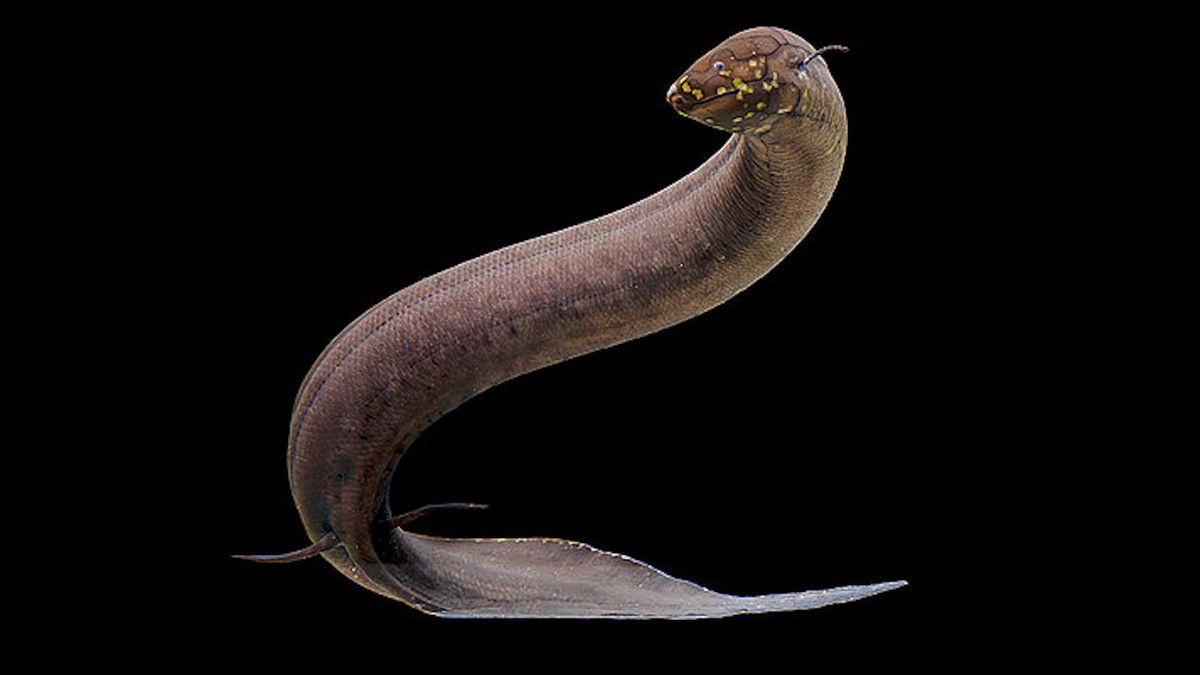Scientists have sequenced the largest known animal genome — and it’s 30 times bigger than the human genome.
The genome belongs to the South American lungfish (Lepidosiren paradoxa), a primeval, air-breathing fish that “hops” onto land from the water using weird, limb-like fins. The fish’s DNA code expanded dramatically over the past 100 million years of evolutionary history, racking up the equivalent of one human genome every 10 million years, researchers found.
The findings could shed light on how genomes expand across the tree of life.
Lungfish are sometimes called “living fossils” because they have existed for hundreds of millions of years. They are thought to be the most closely related species to the first tetrapods, the ancestor of all vertebrates. These ancestors likely sprouted limbs and crawled onto land around 370 million years ago during the Devonian period, (419 million to 359 million years ago), Science reported.
Previously, scientists sequenced the genomes of other lungfish species, including the Australian lungfish (Neoceratodus forsteri). Next on the list were the African lungfish (Protopterus annectens) and (L. paradoxa), whose genome is twice the size of its air-breathing relatives from other continents.
The team described the South American lungfish genome Aug. 14 in the journal Nature. It turns out, these air-breathing fish carry a whopping 91 billion base pairs, or letters, of DNA in their genomes.
That’s enough letters to fill 100,000 books. Yet only 20,000 genes actually code for proteins, meaning the rest may be mostly junk, the study found. More than 90% of the genetic material was made of transposable elements (TEs), or highly repetitive “jumping” genes that were copied from elsewhere in the genome.
The scientists also determined why lungfish genomes expanded so precipitously over the past 100 million years. It turns out that the South American lungfish had key genes that suppress TEs, which organisms may have inherited from viruses long ago.
Carrying around so much genetic baggage can be problematic.
“This must be a huge cost to the animal,” Axel Meyer, an evolutionary biologist at the University of Konstanz, told Science Magazine. “All but one of this lungfish’s 19 chromosomes is the size of the entire human genome, so it takes a lot of energy to copy that DNA. And the nucleus and cell that encase it must be bigger.”
On the other hand, the extra DNA can come in handy when animals need to adapt to changing environments, Meyer said. That’s because TEs can ramp up or down the expression of genes, allowing for more rapid adaptation.
While the lungfish may hold the record for the largest known animal genome, it doesn’t contain the largest genome overall. That honor belongs to a weird fern that harbors 160 billion letters in its genome — more than 50 times the letters found in human cells.
And this particular lungfish may not be the record holder for the largest animal genome for long. The marbled lungfish (Protopterus aethiopicus) may have a genome 50% bigger than this one, Claus-Peter Stelzer, an evolutionary biologist at the University of Innsbruck in Austria who was not involved in the study, told Science. Of course, the species will need its genome sequenced before that can be confirmed.
